US would not seem to leave Syria “very soon” but, conversely, recent satellite imagery (al-Tanf and surrounding areas) reveals Washington increasing its presence in the war-torn country  https://already-happened.com/2018/04/03/us-would-not-seem-to-leave-syria-very-soon-but-conversely-recent-satellite-imagery-al-tanf-and-surrounding-areas-reveals-washington-increasing-its-presence-in-the-war-torn-country/ …
https://already-happened.com/2018/04/03/us-would-not-seem-to-leave-syria-very-soon-but-conversely-recent-satellite-imagery-al-tanf-and-surrounding-areas-reveals-washington-increasing-its-presence-in-the-war-torn-country/ …
 https://already-happened.com/2018/04/03/us-would-not-seem-to-leave-syria-very-soon-but-conversely-recent-satellite-imagery-al-tanf-and-surrounding-areas-reveals-washington-increasing-its-presence-in-the-war-torn-country/ …
https://already-happened.com/2018/04/03/us-would-not-seem-to-leave-syria-very-soon-but-conversely-recent-satellite-imagery-al-tanf-and-surrounding-areas-reveals-washington-increasing-its-presence-in-the-war-torn-country/ …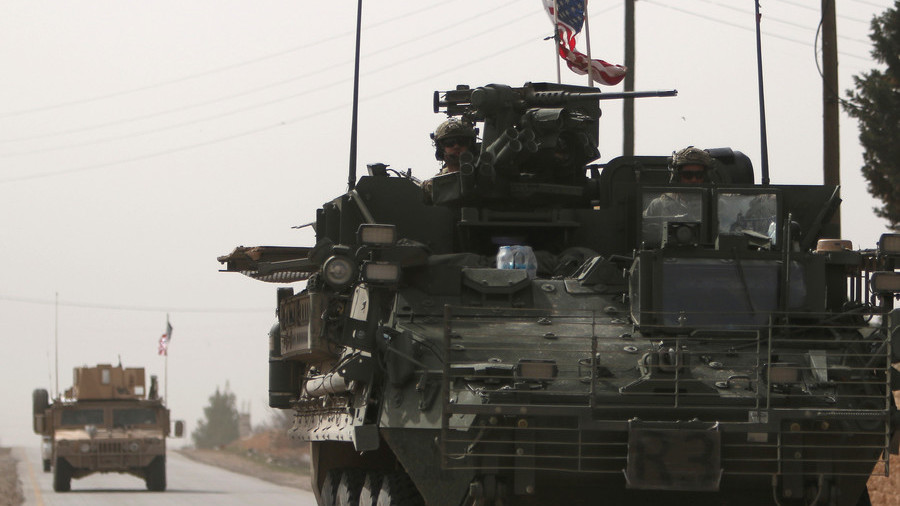
RT,
4
April, 2018
While
President Trump has reiterated his intention to withdraw troops from
Syria, the US military is reportedly working on plans to send an
additional contingent to secure a foothold in the north of the
war-torn country.
"I
want to get out, I want to bring the troops back home, I want to
start rebuilding our nation," US
President Donald Trump said Tuesday
during a news conference at the White House with leaders of the
Baltic nations, noting that the "primary
mission" of
defeating the Islamic State (IS, formerly ISIS) terrorists in Syria
is "almost
completed."
Promising
to make a decision on the pullout "very
quickly," the
president noted that the US gained "nothing
out of $7 trillion"spent
in the Middle East over the last 17 years. "It's
very costly for our country and it helps other countries a hell of a
lot more than it helps us."
While
reiterating his resolve to withdraw 2,000 US soldiers from Syria,
first mentioned in Ohio last week, Trump hinted that the US might be
willing to stay in Syria if its Middle Eastern ally, Saudi Arabia,
pays for US troop deployment.
A
continued US presence in Syria was reportedly discussed between Trump
and Saudi Crown Prince Mohammed bin Salman, who is wrapping up a
three-week US tour which began last month. The Gulf kingdom sees the
US presence in Syria as the main bulwark against Iranian influence in
the region.
"Saudi
Arabia is very interested in our decision," Trump
said Tuesday. "And
I said, well, you know, you want us to stay? Maybe you're going to
have to pay."
Trump's
assessment of the US presence in Syria does not seem to line up with
with the Pentagon's analysis. "A
lot of very good military progress has been made over the last couple
of years, but the hard part, I think, is in front of us," General
Joseph L. Votel, head of US Central Command, noted Tuesday at the US
Institute of Peace.
General
Votel explained that the US
presence in
the northern part of the country will play a crucial role
in "stabilizing" Syria,
while "consolidating
gains" and "addressing
long-term issues of reconstruction."
At
the same time, Votel acknowledged the lack of support by the
Kurdish-dominated Syrian Democratic Forces (SDF), which has abandoned
its US-mandated positions in Syria to repel the Turkish-led operation
in Afrin. The general noted that the US is "going to have to
look at the ways that we keep the pressure on ISIS and continue to
develop mechanisms on the ground that help us de-escalate the
situation" in Syria
"We're
in Syria to fight ISIS. That is our mission, and that mission isn't
over, and we're going to complete that mission," the
special envoy to the Global Coalition to Defeat ISIS, Brett McGurk,
added to Votel's remarks at the US Institute of Peace.
Amid
rising tensions in the region, Anadolu News Agency reported that the
Pentagon is setting up two new outposts in the Manbij region to aid
the Kurdish forces on the ground against a possible Turkish-led
advance.
According
to "trustworthy
local sources," around
300 US troops in armored vehicles have already arrived in the
frontline zone along with construction material to set up a base 8km
(4.9 miles) from Sajur River, "which
forms the frontline between Jarabulus, the Euphrates Shield area, and
Manbij, the YPG/PKK invaded area." The
other base is
allegedly being built 4km (2.4 mi) from the frontline, south of
Dadat, the report added.
The
Anadolu report came out a day after CNN learned that the US military
has been working on plans to
senddozens
of additional troops to northern Syria.
Ankara
launched Operation Olive Branch in northwestern Syria three months
ago after the US announced that it was planning to support the
predominantly-Kurdish militia force, the SDF, with training and
weapons. The Turkish government considers Syrian Kurdish militias an
extension of a domestic militant movement, the PKK, and has
repeatedly asked the Pentagon to end its support for the Kurds.
Damascus
has consistently opposed both the US and Turkish military presence,
saying the deployments are a breach of Syria's sovereignty. Syrian
President Bashar Assad has referred to the foreign troops
as "invaders."
Russian
Foreign Minister Sergey Lavrov warned last month that the US seems to
be planning to stay in Syria for a long time to "disintegrate
the Syrian state" under
the pretense of fighting terrorism. The US strategy, Lavrov noted,
aims "to
cut a huge chunk of Syrian territory from the rest of the country
while setting up puppet local authorities in that area and trying in
every way to establish an autonomous entity under Kurdish authority."
Words from a bigot called Hal Turner that are inconveniently true.
They are broke and can’t afford the social welfare and know that if they cut it they will have a rebellion. The only “solution” they can see is to have a load of “useless eaters”die in a nuclear war.
Horrid but the truth is always better than a fantastical LIE.
Intel chief: White House has made decision on troops in Syria
4
April, 2018
The
White House will release a statement “shortly” on its decision on
whether to pull U.S. troops from Syria, the top U.S. intelligence
chief said Wednesday.
Director
of National Intelligence Dan
Coats would
not say what the decision was but that it had been reached
Tuesday during a meeting of the National Security Council.
“I
can’t go into the details of what was decided yesterday with our
national security team and with the president. But there will be
released a statement shortly, relative to the decision that was
made,” Coats told reporters at a media breakfast in Washington.
President
Trump a
day earlier indicated that he wants to pull U.S. troops from the
war-torn country;"I want to get out. I want to bring the troops
home,” Trump said at a news
conference with leaders from the Baltic states.
But
top military and State Department officials said the
U.S. would continue
to operate Syria until the threat of the Islamic State in Iraq and
Syria (ISIS) is extinguished.
Satellite
imagery suggests the US is actually BUILDING-UP forces and equipment
in Syria. Below are images from a US Base near Al-Tanf, Syria:
BEFORE:
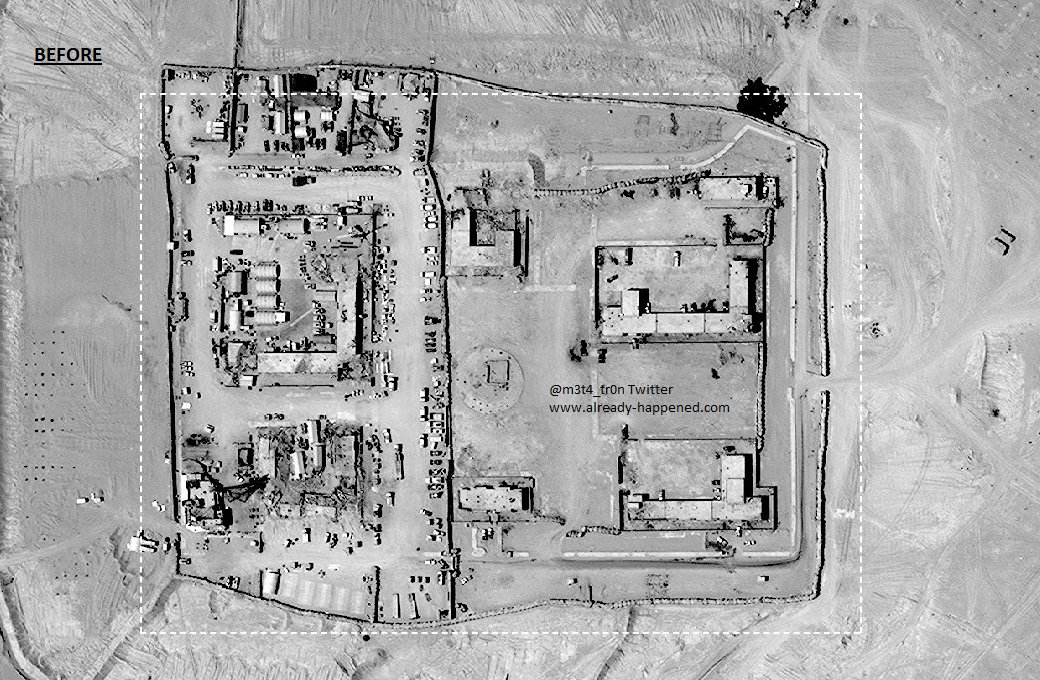
AFTER:

“There
still are some areas where [ISIS] are present and that we will have
to continue to operate on,” U.S. Central Command head Gen.
Joseph Votel said Tuesday at a U.S. Institute of Peace event in
Washington.
Brett
McGurk, the U.S. special envoy for the global coalition against ISIS,
told the forum that “we are in Syria to fight ISIS. That is
our mission and our mission isn’t over, and we’re going to
complete that mission.”
About
2,000 U.S. troops are in Syria, backing Kurdish fighters against
ISIS. Some officials have said they fear that pulling U.S.
forces out too soon could potentially allow an ISIS resurgence
in the country.
When
asked about Votel’s and McGurk’s assessments, Coats replied that
the defense and intelligence community “have ongoing discussions
relative to a whole range of issues.”
“A
statement will be issued relatively soon, relative to that,” Coats
added.
US
would not seem to leave Syria “very soon” but, conversely, recent
satellite imagery (al-Tanf and surrounding areas) reveals Washington
increasing its presence in the war-torn country
4
April, 2018
US would not seem to leave Syria “very soon” but, conversely, recent satellite imagery (al-Tanf and surrounding areas) reveals Washington increasing its presence in the war-torn countryalready-happened.com/2018/04/03/us-…
Sen.
Bernie Sanders, I-Vt., agreed with President Trump that American
involvement in Syria needs to end, but said Trump’s statement that
the U.S. will leave soon is off-base.
Sanders
said on CNN’s “State of the Union” the U.S. cannot stay in
Syria forever but the idea that American forces can leave “very
soon,” as Trump said, isn’t possible.
US would not seem to leave Syria “very soon” but, conversely, recent satellite imagery (al-Tanf and surrounding areas) reveals Washington increasing its presence in the war-torn countryalready-happened.com/2018/04/03/us-… pic.twitter.com/sLQnekTe0F
I can't cover the whole area because is too big, but there are several major developments including fresh (heavy) equipment, it's like a big fortress with many village inside "the walls" making hard for Intel to spot military hardware
“It’s
not a yes or no,” Sanders said when he was asked if he agreed with
Trump’s statement in a speech Thursday.
“I
think we absolutely do not want to get involved in this terrible
civil war in Syria, which is so destructive, so destabilizing to the
entire region. But, I don’t know that you can pull out tomorrow.”
Trump
caught much of the foreign policy world off-guard Thursday when he
said he expected the U.S. to leave Syria soon.
“By
the way, we’re knocking the hell out of ISIS. We’re coming out of
Syria very soon. Let the other people take care of it now — very
soon, very soon, we’re coming out,” Trump said.
“We’ll
have 100 percent of the caliphate as they call it, sometimes referred
to as land, we are taking it all back quickly, quickly. We’re going
to be coming out of there real soon, going back to our country where
we belong, where we want to be.”
Sanders
said working with all the region’s players — including Russia —
must be a part of the peace process.
“Our
job now is to work with our allies in the entire region and that is
to do everything that we can to bring peace to Syria, make sure that
Russia is part of that process,” he said. “But absolutely, I do
not want to see American troops get stuck in a never ending civil war
in Syria.”



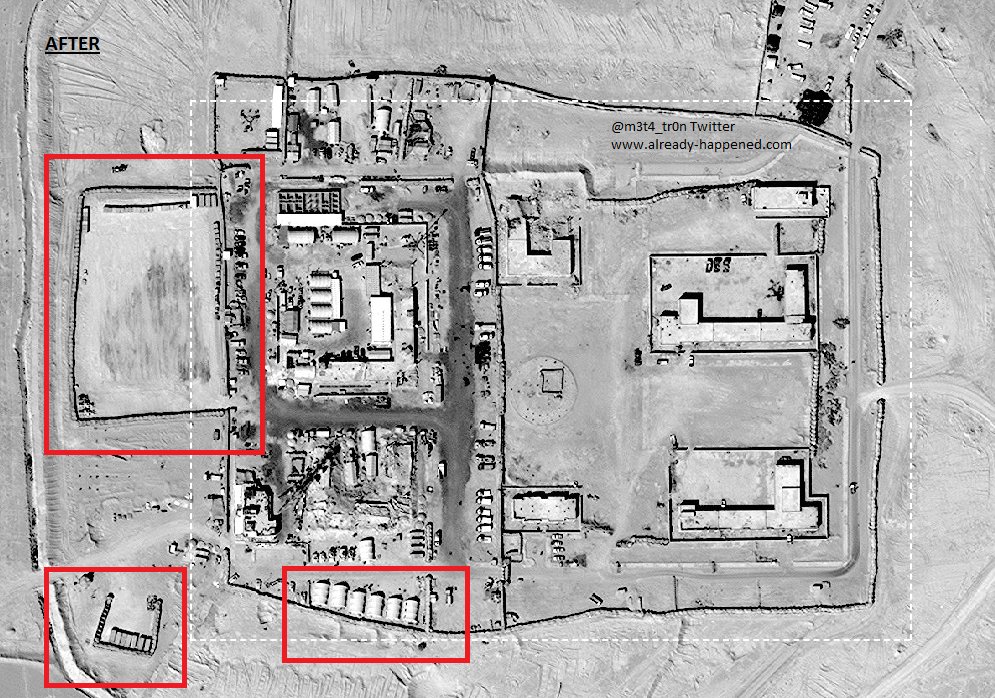
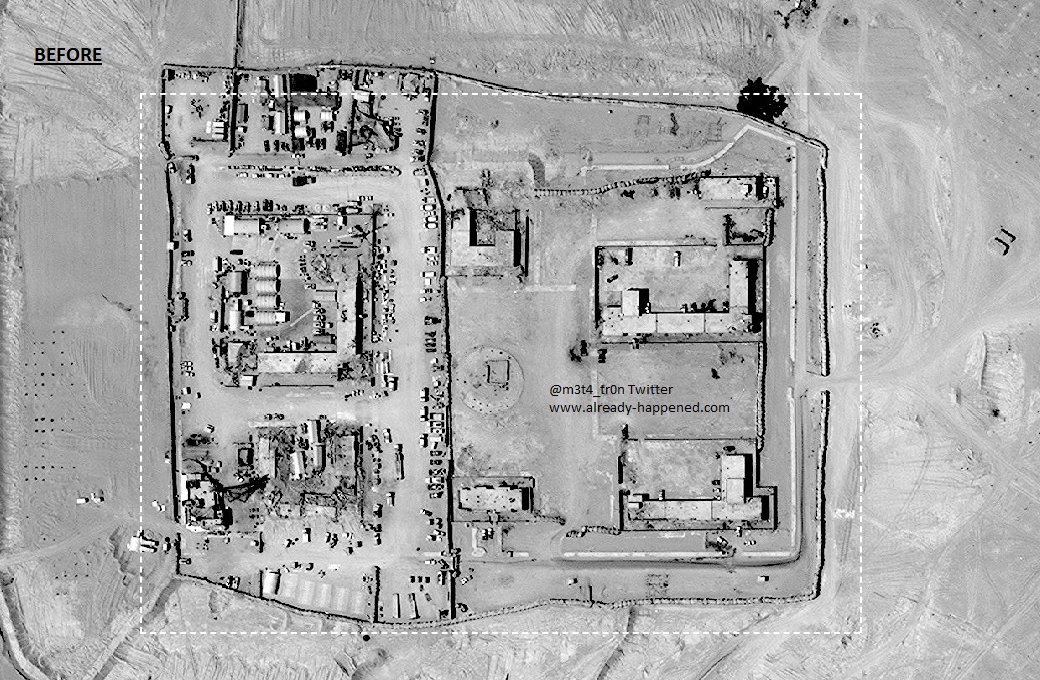
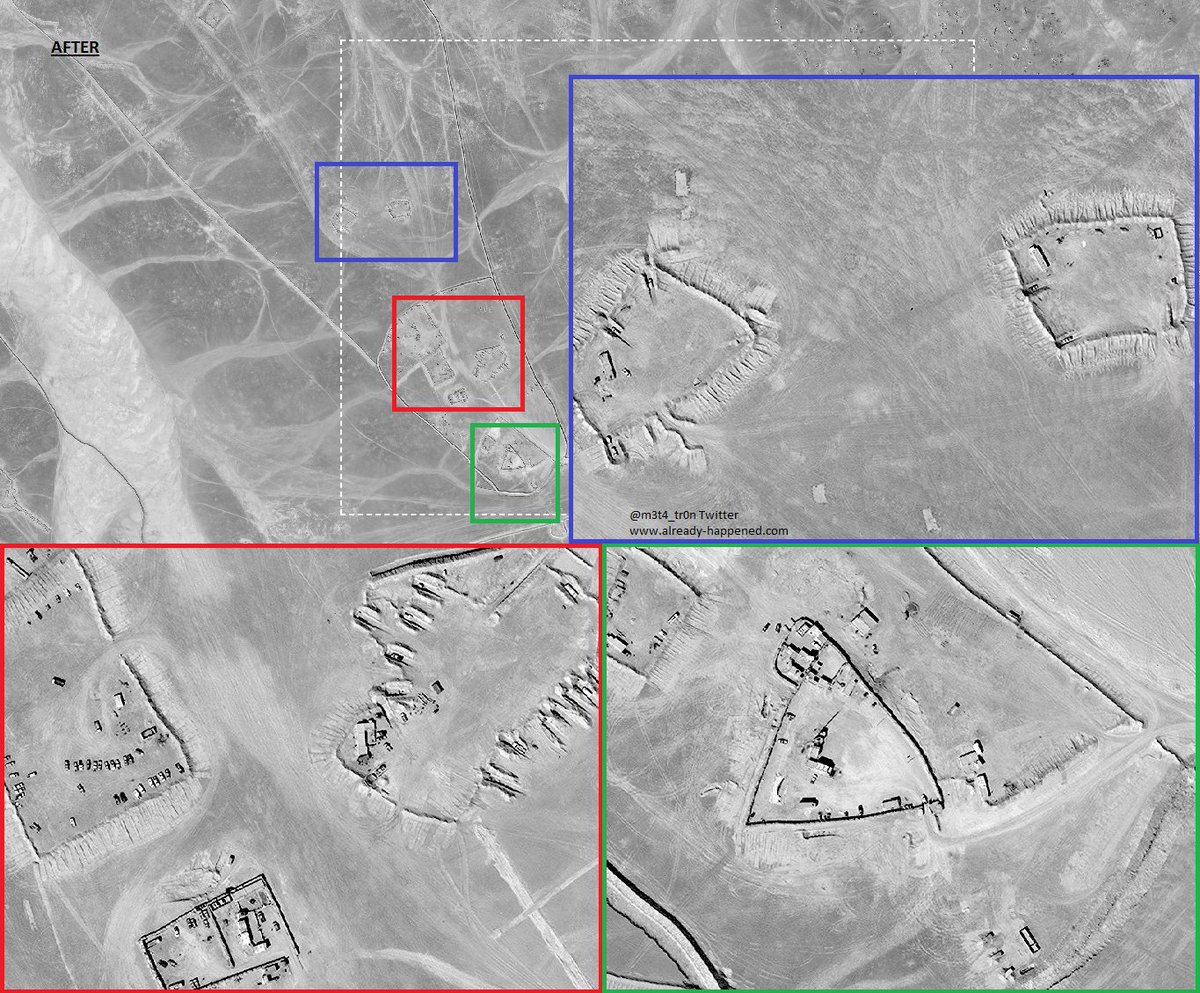

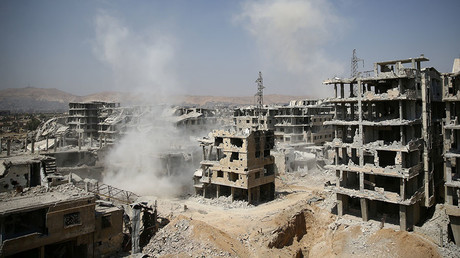


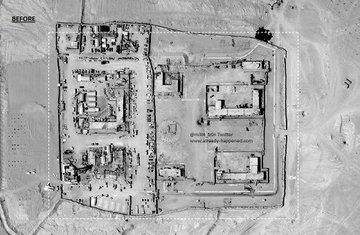
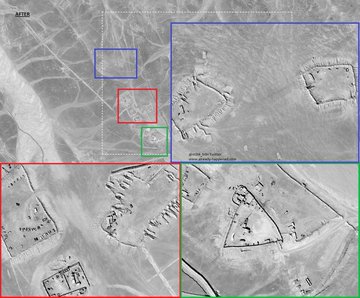

No comments:
Post a Comment
Note: only a member of this blog may post a comment.